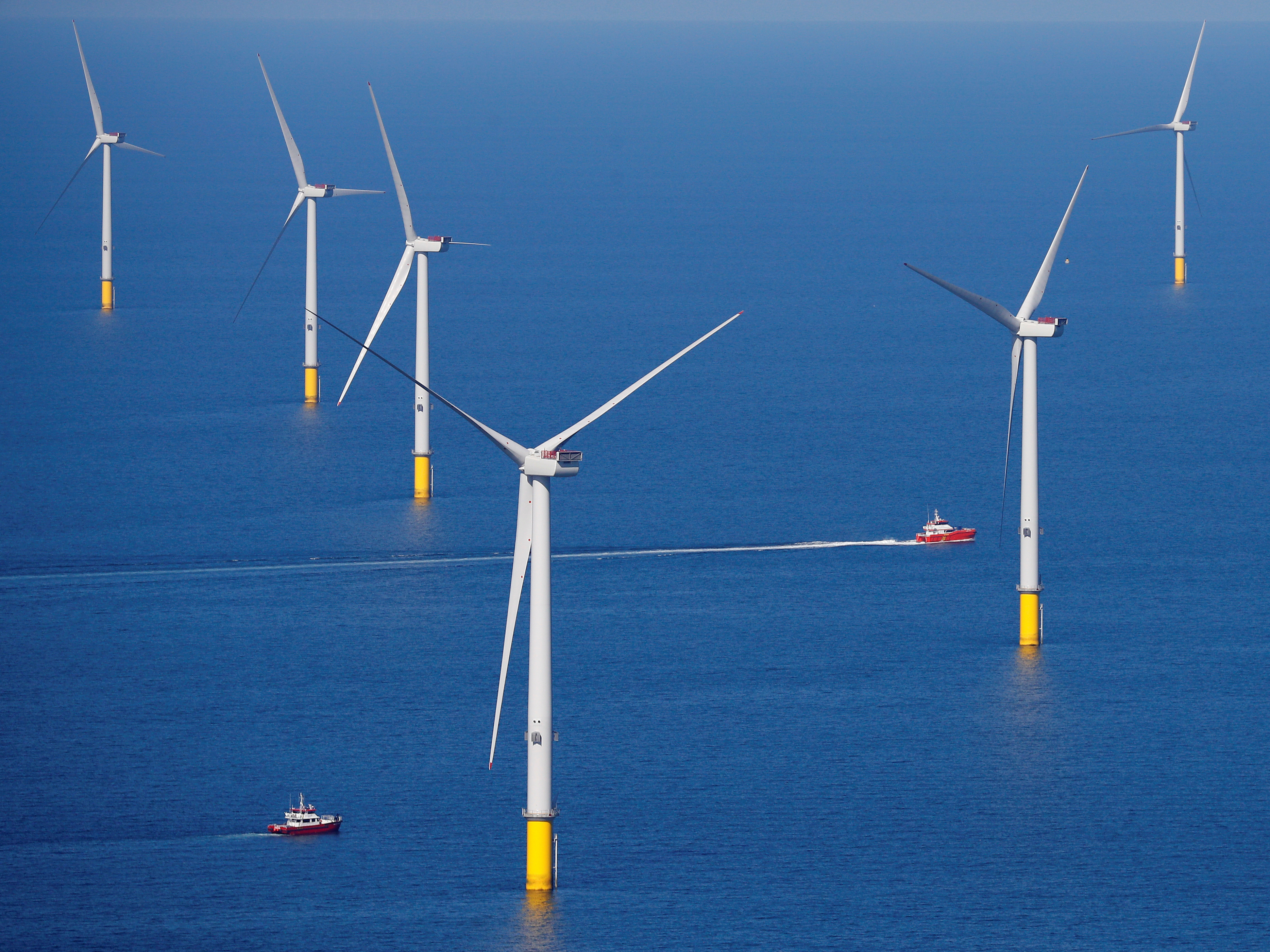
Wind farms backed by government subsidies could be paid more to switch off than to generate power, The Telegraph has learnt.
A lack of grid storage and transmission infrastructure means that the UK is regularly producing more electricity from wind than it can use.
At particularly windy times, the National Grid pays producers to switch off rather than overload the local system, with the costs passed on to household energy bills.
Producers offer the price at which they are willing to switch off, which is normally around the market rate for electricity, currently at record highs because of the energy crisis.
Wind producers on newer government subsidy contracts are paid a fixed price, generally below current market rates, to generate electricity.
By switching off, producers may therefore be able to make rates well above their fixed prices.
Although the loophole only applies to about seven per cent of wind farmer producers on so-called “contracts for difference” (CfD) – the newer subsidy system – the issue could grow as new wind farms come online.
Developers of the newest wind farms have offered to produce power for a guaranteed price of as little as £37 per megawatt-hour (MWh).
That compares to wholesale electricity prices currently around £150/MWh, which are expected to stay at record-high levels for years to come.
Meanwhile, the National Grid forecast that levels of curtailment will grow fourfold in the next decade, from 3.8 terawatt-hours (TWh) in 2022 to 15TWh in 2030, with costs forecast to reach £2.5 billion a year
In 2022, consumers paid £215 million to turn wind farms off, and £717 million to buy gas-powered electricity to make up the difference, according to figures from the UK Wind Curtailment Monitor.
The Telegraph revealed this week that wind farms could be paid to switch off even at times when the National Grid is paying households to turn off their gadgets because of blackout fears.
Simon Cran-McGreehin, the head of analysis at the Energy & Climate Intelligence Unit, said that CfD wind farms were saving households money overall.
He said: “Gas power stations receive the lion’s share of constraint payments and have been driving up the electricity price because of the surges in the international gas price and the way the power market is currently structured.
“Through contracts for difference, the big new offshore wind farms have been effectively subsidising bills roughly to the tune of the constraint payments going to wind.
“For bill payers, it’s regrettable that the UK hasn’t encouraged greater investment in its power grids and that we’re having to turn away cheap wind power at the very time we need it to reduce our reliance on gas.”
However, Craig MacKinlay, a Tory MP and chairman of the Net Zero Scrutiny Group, said: “The fact that hundreds of millions of pounds are being paid annually to wind farms not to generate, with these costs added to consumer bills, is a national scandal.”
Mr MacKinlay said the issue highlighted that “the intermittency of renewables with gas having to be used as the reliable balancer means wind companies are reaping the cream but doing nothing to help energy security”.
He added: “BEIS [Department for Business, Energy and Industrial Strategy] lawyers who drafted these appalling contracts are responsible for billions of pounds of additional costs to consumers.
“The complexity of the energy system and its pricing is a direct result of distorting a functioning market on the altar of net zero.”
Adam Berman, the deputy director of policy from Energy UK, said that the Government’s zeal to build wind farms had not been matched with efforts to ensure adequate storage and transmission infrastructure.
He said: “What the Government has done over the last few years is to put a real emphasis on just building generation wherever they can, incentivising the build-out of generation.
“What we need to make sure now is that we’ve got a genuinely holistic understanding.”
He added: “In the net zero system that we’re heading towards, there’s a real need to ramp up efforts on energy storage so that we’re not having to curtail wind.
“That’s looking at technologies like green hydrogen, pumped hydro storage, batteries, liquid air and a whole set of technologies that can collect this energy at lower cost at periods of lower demand, and then put it back into the system.”
A government spokesman said: “The Government is currently undertaking a review of electricity market arrangements.
“Curtailment payments are used by the National Grid ESO, as well as in other nations around the world, to safely manage electricity supply on a day-to-day basis. Wind energy companies are not able to rely on these payments as a stable or longer-term income.
“As set out in our Energy Security Strategy and Electricity Networks Strategic Framework with Ofgem, the Government is committed to accelerating the delivery of improved electricity network infrastructure as new sources of clean and affordable electricity generation come online.”